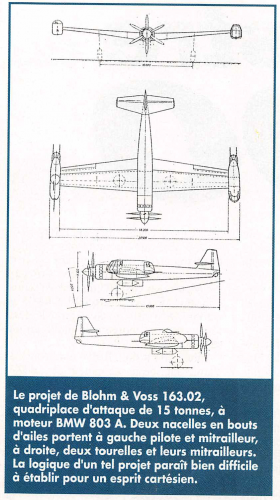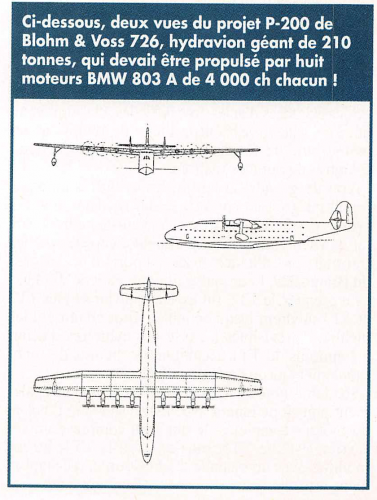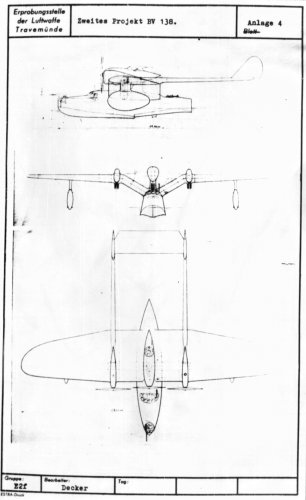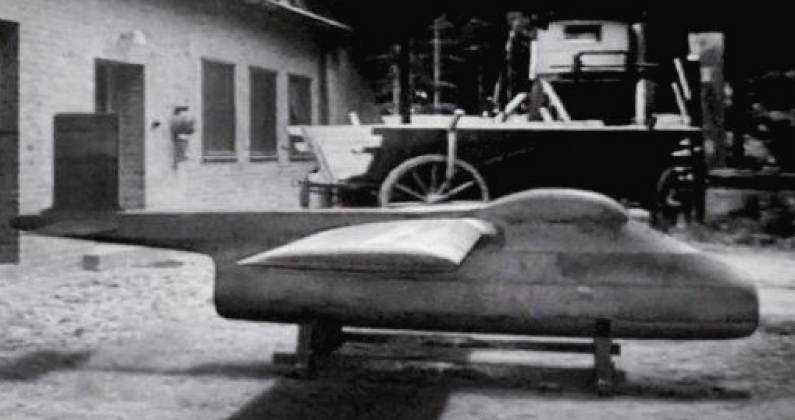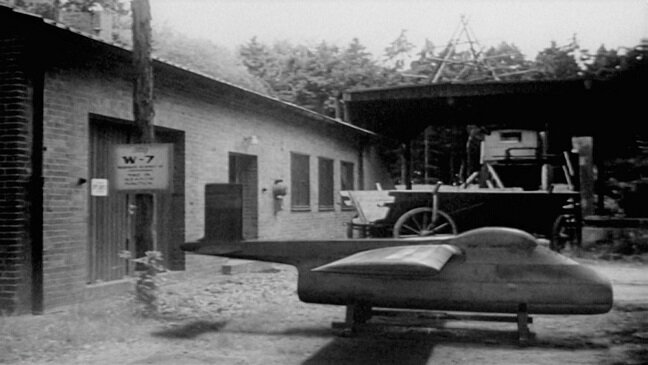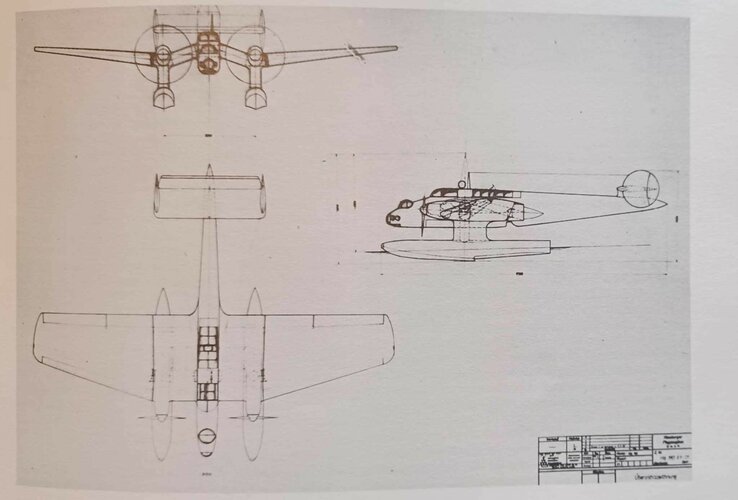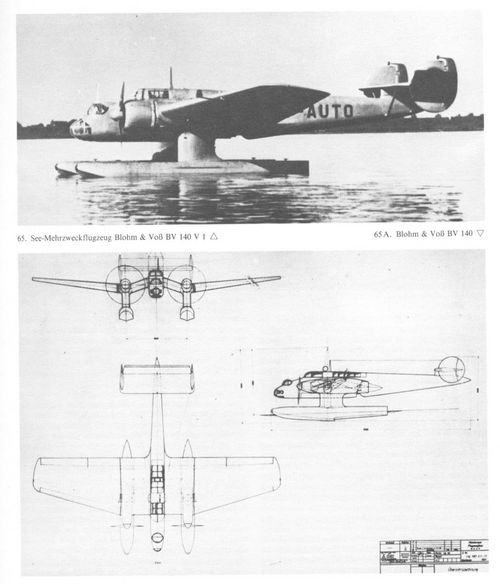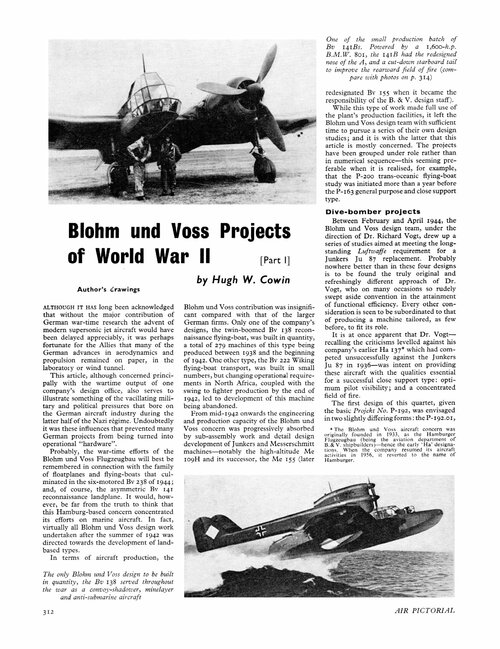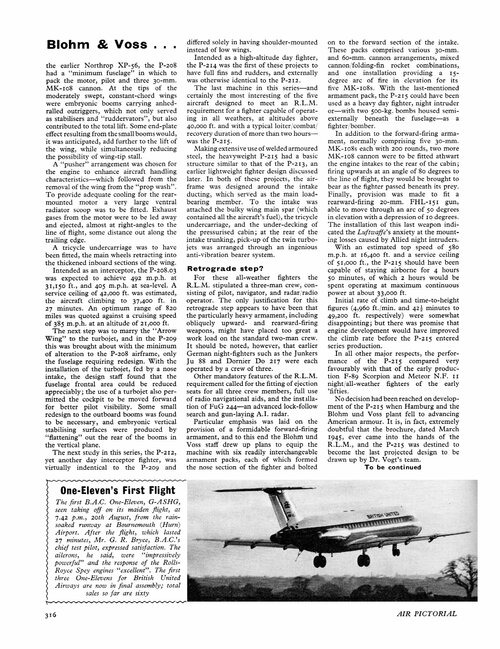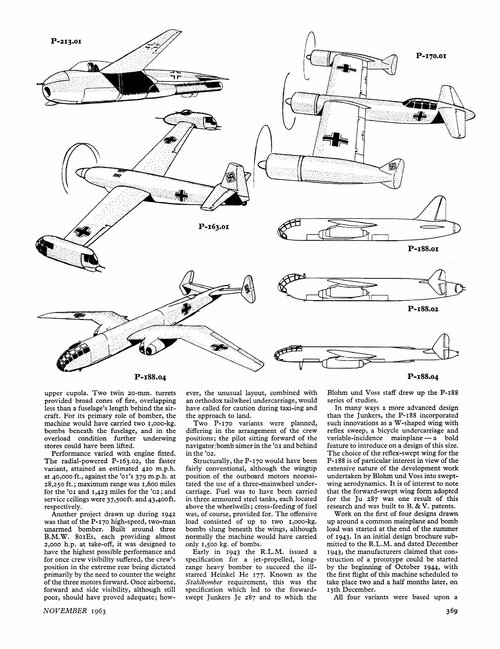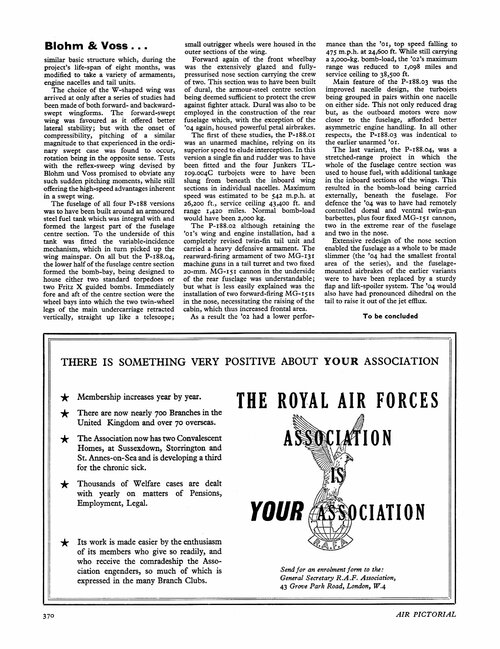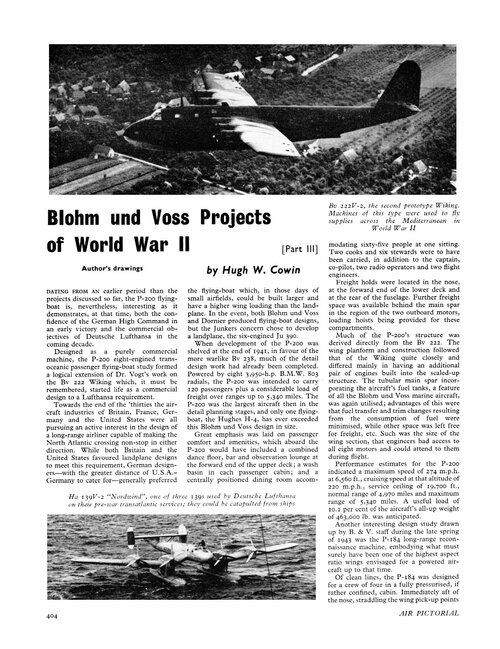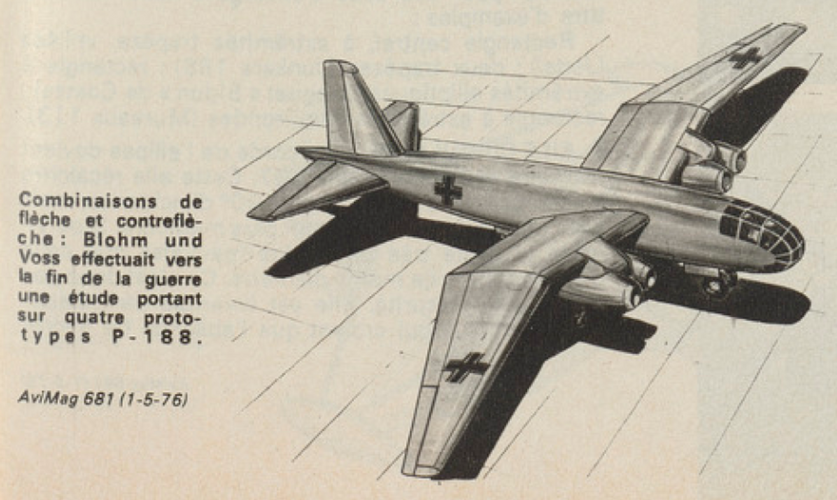The 2nd one shows a very obvious seam between the shadow and wingtip.
Besides that its a very large model. Were they even running the big tunnels at the end of the war? The power usage of such tunnels is immense and its hard to see them using the bigger tunnels unless they could avoid it.
As the text tells us,it was not fake;
Bottom left: The wind tunnel model
of the hunter Blohm &
Voss P 211, a competing project
to He 162, is behind
End of the war unnoticed
the company's premises.
It seems unlikely to be genuine. On October 12, 1944, Richard Vogt wrote a brief history of his involvement in the Volksjaeger project. He was feeling embittered because his design lost and he wanted to make sure posterity knew - when the He 162 failed - that he had been right all along.
He recounts the various twists and turns - his original design, drafted between September 10, 1944, and September 14, 1944, was the swept-wing P 211.01-01. Having seen Heinkel's simpler and less risky P 1073 at the comparison meeting on Semptember 14, his engineers revised the P 211 to create the straight-wing P 211.01-02 (the design apparently shown in the FliegerRevue X 90 photos). This was described in a new report dated September 29, 1944.
So the new design was created - on paper - in two weeks.
But Hitler had already been persuaded to approve the P 1073 on September 23, 1944. And Knemeyer formally announced this decision on September 29 - the same day that the P 211.01-02 design was published.
Vogt was annoyed because he felt that the P 211.01-02 was now superior to the P 1073 (he was probably right) but his design had been rejected primarily on the basis of concerns about the length of the intake duct. So first, on October 2, 1944, Vogt appealed the decision and his appeal was rejected.
Then he invited the very well respected Dietrich Kuechemann from the AVA to Hamburg to assess his design, particularly with regard to the intake duct - and Kuechemann reported the following day (October 5) that the P 211.01-02 was superior to the P 1073 in most respects. The B&V duct was relatively short and unlikely to result in reduced airflow to the engine, he wrote, and with the P 1073 there were unresolved concerns about the effect of the boundary layer on the intake positioned above the fuselage.
And here's the interesting bit:
Kuechemann arranged for 'rough' wind tunnel tests to assess the effect of air flow on ducts of different lengths and from different angles and whether vibrations occurred under different conditions. The tests found that airflow was unaffected up to angles of 60-degrees.
The models used in these tests appear to have been different lengths of cylindrical piping with either a 'sharp' or 'rounded' edge. Kuechemann's text (undated, but definitely received by Vogt on or before October 12 - see below) says: "Die Abrundung des Rohreinlaufes bringt, gegenueber dem scharfkantigen Rohr, nur ein frueheres Einsetzen der Schwingung bei etwas kleineren Schraeganblasungswinkeln."
I wrote in Secret Projects of the Luftwaffe: Heinkel He 162 and also in Secret Projects of the Luftwaffe: Jet Fighters 1939-1945 that the AVA had conducted wind tunnel tests which proved that Vogt's intake duct was fine. And they did. But they didn't go to the time, trouble and expense of constructing a full scale P 211.01-02 model! They just used bits of pipe.
However, if all you knew was
the that the AVA carried out wind tunnel tests to prove that the P 211.01-02's duct was fine, you might think that such a model had been built for that purpose. But it wasn't. Vogt sent the results of the AVA tests to the Chef-TLR on October 14 but clearly by this point the He 162 was unstoppable.
The bill for B&V's involvement in Volksjaeger appears to have been RM 1100 and the invoice for this sum seems to bounce around between various different institutions well into January 1945 and it's not clear if B&V ever got paid for it.
The P 211.01-02 only really existed for a couple of weeks before it was well and truly rejected. Building a large wind tunnel model of it would have been utterly pointless.

